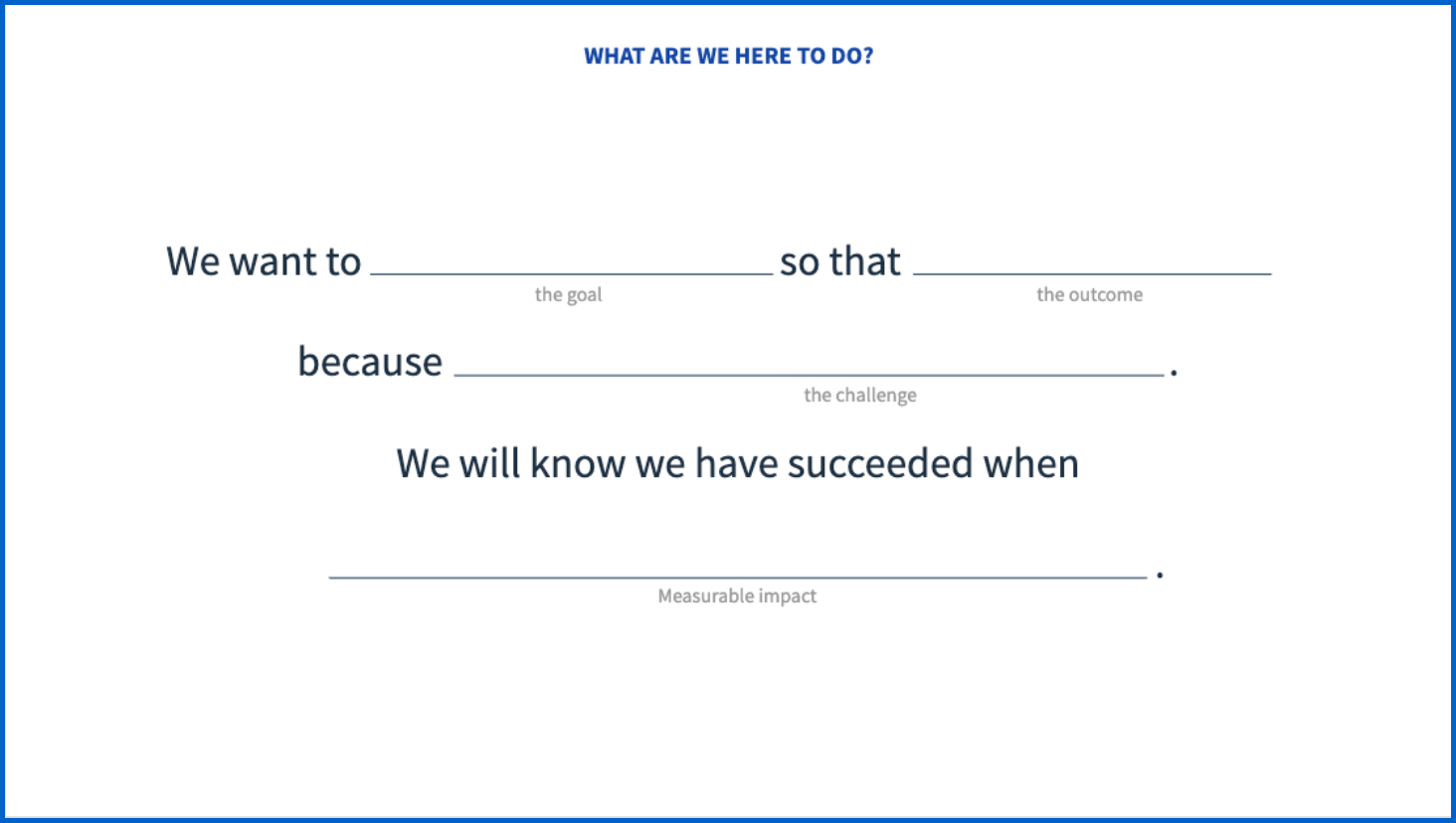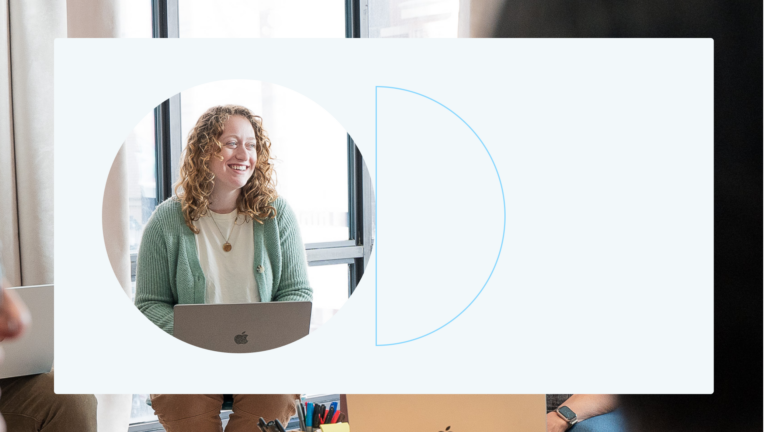9 tips for managing uncertainty in digital projects

This year’s global pandemic has increased our awareness of uncertainty and risk in business pursuits. In our industry specifically, we’re working to make progress and stay productive on digital projects in an environment where we don’t know what is coming next.
But in reality, we’ve never had certainty that projects would unfold as planned, and we are often met with surprises. Common examples of uncertainty and ambiguity in digital projects include:
- Sudden timeline shifts
- A valued team member moving on to a new position
- A market event that affects our project trajectory
- The need to occasionally (or permanently) conduct work remotely
- Unexpected feedback that results in significant rework
In our recent webinar, Managing Uncertainty in Digital Projects, a few of our engagement management leads, including Bruce McMahon, Elina Yudilevich, Jessica Victor, and myself, discussed tactics and strategies we’ve used in the past to manage the unpredictable nature of digital projects. Below are our most-recommended tips for maintaining progress and achieving success in digital projects amidst any kind of uncertainty.
1. Start at the Beginning
Risk mitigation and planning for uncertainty begins at the start of the project. Taking the time for a project kickoff or “sprint zero” allows for alignment on the three main pillars of your engagement: budget, scope, and schedule. These three metrics can be an anchor of certainty for the team to fall back on when other things are up in flux, and they can also help gauge the overall health of the engagement.
The kickoff is the time to set a “true north” for your project by creating a purpose statement and agreeing on project goals. A purpose statement will anchor the work. To develop the purpose statement as part of your kickoff, ask each attendee to fill out a sticky (or virtual sticky) for each blank in the following statement, then compare answers with the team. Together, distill the options down to create the final version.

2. Assemble the Right Team
Team chemistry and history is not always in our control, but the makeup of a team can alleviate uncertainty and risk. Employing specialists on your team can increase efficiency on a project, as can assembling a team of people you know work well together. Having an efficient team of experts with a history of working together will ultimately allow more time and space to address any unexpected challenges.
Also, remember that even a dream team needs a strong leader or leadership team. Strong leadership can guide the way in times of uncertainty, aiding in decision making and addressing ambiguity from stakeholders so that the team can focus on their work.
3. Know Your Stakeholders
Stakeholders are the most critical members of a team, whether it’s a vendor-client relationship or an internal initiative. They control the throttle on the speed of work and provide just-in-time information to guide a project.
A stakeholder can greatly affect the amount of uncertainty on a project in three key ways:
- The time they commit to the project
- Their understanding of the organization’s decision-making process
- Their level of engagement
Ceremonies like kickoffs are helpful to set expectations for the amount of time required from stakeholders, and they outline critical points in the engagement when you’ll need their input. Understanding who the decision makers are and what the decision-making process is at the organization is also critical. Are compliance reviews needed, or does the IT department need to be consulted for specific decisions? How should the team plan for decision points, and can we incorporate key decision makers early on in the design process?
Engagement from stakeholders is the key to avoiding the dreaded “swoop and poop,” where a stakeholder reverses an earlier decision or introduces new requirements that result in a great deal of rework. Gauge the stakeholder’s engagement level by looking for red flags, like frequently cancelled meetings or lack of feedback on deliverables. Employ early mitigation strategies to re-engage your stakeholders and get the decisions you need—or create contingency plans.
4. Develop a Communication Strategy
Take the time to decide on a communication strategy and share it out with your team. More specifically, decide on what will be shared with who, how frequently, and in what format.
Also, consider the recipient of any communication and tailor it to their needs. This can get you answers faster. For example, if you know the recipient of your message only has time to read one sentence, make sure you include the most critical information first. If you’re having executive-level check ins or steering committee meetings, you’ll have to decide on the appropriate level of detail in what you’re reporting. Reporting information concisely is an art form, and it takes more time and effort than just reporting out all of the details.
5. Continue to Plan Amidst Uncertainty
Planning is still possible even when things are uncertain. Plans can be created around the known factors or assumptions used for estimation. Estimates can be used to create roadmaps and project plans, while still leaving room for the unknown. It’s a common practice to plan with contingency. For instance, if you are aiming for a December release, plan to be ready in November—assuming that something will come along and cause delays.
It’s a common misunderstanding that being agile means you don’t need a plan. Planning your features for release is a type of project plan, and story sizing is another form of estimating. All agile tools ultimately show you the plan to your release, or what is featured in each release.
6. Look for Opportunities to Mitigate Risk
Risk mitigation happens in both formal and informal ways on an engagement. Asking for frequent stakeholder and team feedback outside of recurring meetings can be enlightening, and it can surface opportunities for course correction that didn’t feel worth “escalating.” Over time, these small corrective actions can make a huge difference in reducing risk and improving the experience of an engagement.
Formal risk mitigation can include a premortem where everyone anticipates all that can go wrong on an engagement. An example exercise you may do in a premortem is the sailboat exercise. You identify the anchors that may slow you down, the wind that will push the project along faster, and the rocks in the path that can disrupt the project. When risks are identified, they can be tracked in a risk matrix that outlines each risk and its mitigation strategy.
Documentation in a tool like Confluence is another risk mitigation strategy. Accurate documentation of decisions made can help address any amnesia that arises during projects. Documentation is also an important part of decreasing the impact of unexpected team transitions.
7. Know and Share Your Project Status
Knowing whether an engagement is on track is grounding for both stakeholders and team members. There are different tools that can be used to track and show progress against budget, timeline, and scope—such as TeamGantt or Smartsheets. However, the data needs to be accurate, timely, and clearly communicated.
Extracting that data from your team can also be a point of uncertainty. Anchoring your team in reporting against the known parameters in a project can open up information when there’s a lot that is uncertain or in flux. Some data is always better than no data.
8. Know How to Break Decision Stalemates
Uncertainty arises when unclear or conflicting direction is given to a team. When having a clear decision maker is not enough to provide definitive direction, there are tactics to guide the team (Software Advice). Weighing options or direction against the purpose statement and project goals can be helpful in this situation, too.
Your team can also identify the areas where user research can back up a decision. Evidence-based design anchors all decisions in research and the user needs, and it can alleviate pressure in the decision-making process. Research breaks ties.
9. Look Back Before You Look Ahead
Project retrospectives and sharing lessons learned from an engagement are key for alleviating risk on the next one. Teams can easily reinvent the wheel due to a lack of understanding of what has already been done at their company. Investing time in developing a retrospective practice that shares out deliverables, lessons learned, and new tools used will save headaches on future projects.
If you’re looking for more in-depth information on any of the points above, watch the recording of our webinar on managing uncertainty and listen to the full conversation.



